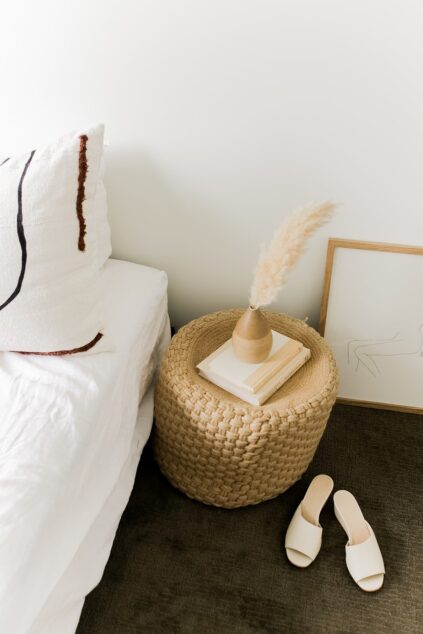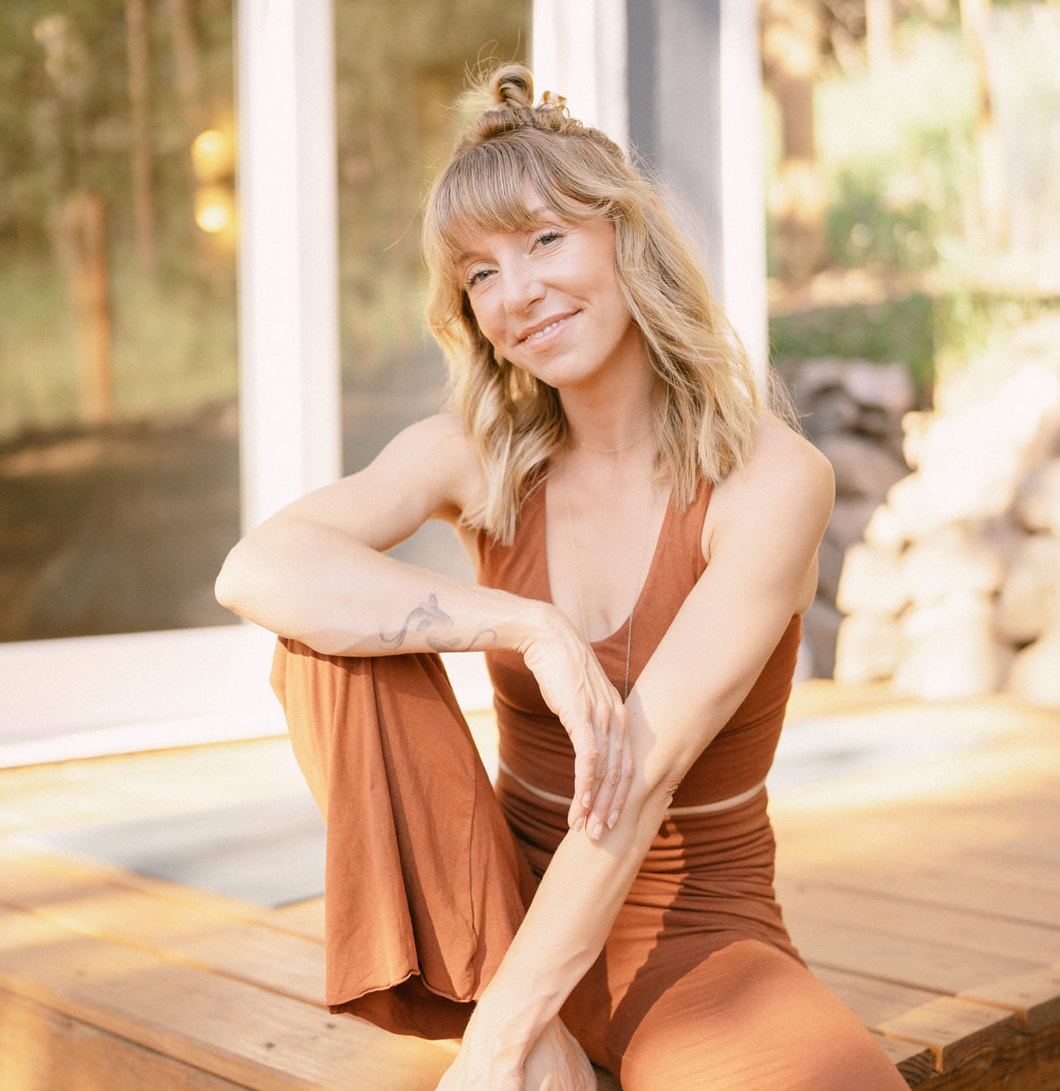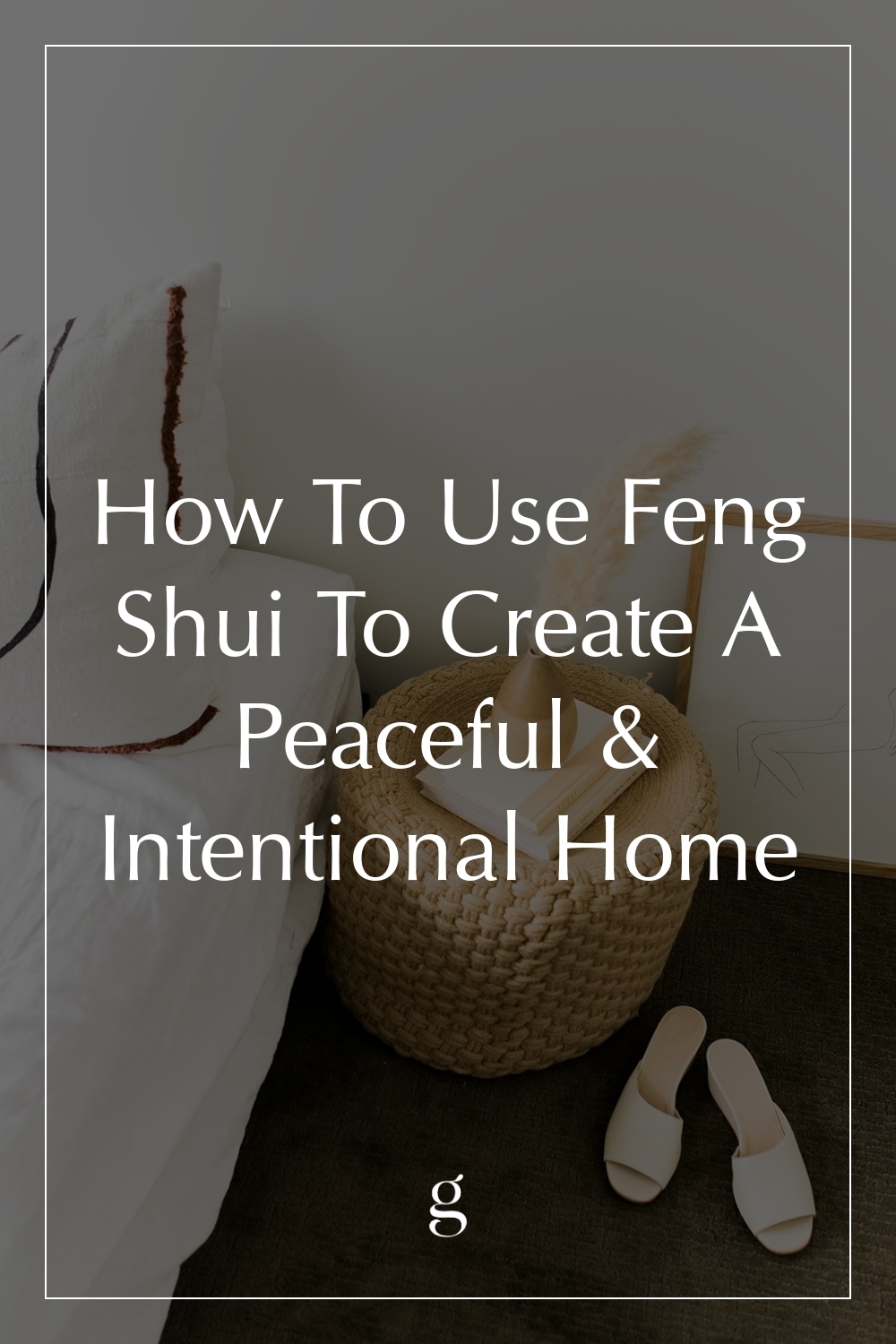
How To Use Feng Shui To Create A Peaceful & Intentional Home
How We Feel In A Space Matters
We all know the feeling of walking into a room and our senses heightening in a way that’s energizing, inspired, or calm. We also know the feeling of walking into a room and feeling uncomfortable or unsettled. These reactions to the spaces around us are part of the ancient Chinese practice of feng shui. Though the studies are highly complex and date back 6,000 years, how we feel in a space is feng shui in its most stripped-down form.
“When you incorporate the methods of feng shui into a space, you are essentially setting goals for what you want to bring into your life.”
The word feng means “wind” and the word shui means “water.” In Chinese culture, wind and water are symbols of good health, and thus, good fortune. When you incorporate the methods of feng shui into a space, you are essentially setting goals for what you want to bring into your life. Conversely, this Chinese practice suggests that when we have bad luck or misfortune in life, we may be living in a space with bad feng shui.
Feng shui is also rooted in the Chinese philosophy of yin & yang energies. The theory of yin & yang is that everything in our existence is composed of two opposing forces; neither can live without the other. These forces include light and dark, feminine and masculine, and hard and soft, to name a few. In feng shui, this concept is displayed in how we must balance the chaos around us to create peace in our lives. It is a fascinating idea that—as humans—we are forever moving through our existence with two opposing, yet interconnected, forces.
To help further understand the concept, feng shui expert Rodika Tchi explains, “Consider feng shui to be like acupuncture for your home, noticing the energy meridians that feel out of balance and how you might want to ‘poke’ or treat those areas.” She also points out that feng shui can be defined as a practice of “connecting your mind, body, and spirit with your space.”
“Stuck energy in the home often relates to stuck energy in the body…[decluttering gives us] access to new ideas, to renewed motivation to make changes, to simply feeling better, lighter, and breathing easier.”
Feng shui can even go beyond organizing and decorating, and reach a deeper physical and emotional place. The feng shui expert Lorrie Webb of Thriving Spaces discusses how she works with clients to manage clutter in a home, and how it’s connected to our wellbeing. “We talk a lot about clutter and how important it is to clear it because clutter equates to stuck energy,” she says. “Stuck energy in the home often relates to stuck energy in the body, which can lead to health issues. I often find that when clients declutter, that new energy flow helps in so many different ways from access to new ideas, to renewed motivation to make changes, to simply feeling better, lighter, and breathing easier.”
If you’re ready to use feng shui to create a more intentional living environment, here are some steps you can take to get started.
1. Evaluate Your Needs
To begin achieving feng shui in your home, start by considering what areas of your life feel out of balance. Also think about what—in terms of health, love, and money—you wish you had in more abundance. You then want to look at what parts of your home may feel unbalanced, such as areas that feel cluttered. Start by working on those.
2. Create An Energy Map
Once you have considered what areas in your home and life need focus, you want to create something called an “energy map,” or a bagua, translated from Chinese as “eight areas.” These eight areas in your home are meant to define eight major areas in your life that are essential for happiness. They include: Health/Family, Money/Abundance, Fame/Reputation, Love/Marriage, Children/Creativity, Blessings/Fortune, Career/Life Path, and Spirit/Growth.
3. Add Balancing Elements
Within these sections of the bagua, there are colors and earth elements to incorporate into spaces for different outcomes. Ideally, each area of your home will have all of the elements to create balance, but the designated areas for growth may have more prominent colors, depending on how you want to grow. To get started in creating a bagua, this is a helpful how-to guide to get a visual example and step-by-step.
If you need to feel more energized, you may want to add more “fire” element into a space. This includes incorporating red and orange colors along with using decorative elements like candles. Or, if you are needing more grounding and stability in your life, you can incorporate “earth” into a space by using ceramics, pottery, and the colors yellow and brown. According to experts, incorporating earth energy into a bedroom brings nourishment, stability, and support.
Another example is adding “water” to a room to help increase the flow of opportunities and to find life’s purpose. You can do this by using decorative elements such as glass, mirrors, and crystal, and incorporating the colors black and dark blue. The other two elements that may be used in this area are wood and metal.
4. Make It Personal
All this is not to say that your home should be completely stripped down to fit within feng shui “rules.” Most importantly, a home should fit your own unique style. However, as we continue to expand the narrative surrounding physical and mental health, paying extra attention to how we feel in our home can become an added layer of self-care.
As we use the Eastern studies of feng shui in modern, Western culture, we are constantly learning from the vast knowledge that comes from this ancient method. It acts as a guide for greater expansion of health and wellness in our lives. Use it to transform a space and to transform into a better version of yourself.
// Feng Shui Resources //
Podcasts
In the podcast Holistic Spaces, the host Anjie Cho, a licensed architect and feng shui educator, offers accessible tips and tricks for implementing feng shui elements into your home and life. Another great resource is the podcast Spark Joy, rooted in the philosophies of the Konmari method. The hosts talk to the feng shui expert Laura Cerrano for a deep dive into the ancient studies and how we see these Eastern practices in our Western society. They also discuss the various branches of feng shui and how they have evolved throughout the centuries.
Blogs
The Spruce is a well-curated and thorough place to find helpful resources on home decor. It also has an entire library of curated posts that offer accessible advice on decorating using feng shui practices. Another resource is the blog Know Feng Shui that focuses on all of the nuances of feng shui in a home. There are also articles that examine how the practices of feng shui may show up in our relationships and life.
Books
For beginners just starting to dive into the teachings of feng shui, the author and feng shui expert Lillian Too has written over 200 books on the topic. Her book Lillian Too’s Smart Feng Shui For The Home offers accessible wisdom for implementing feng shui into your life right where you are, using what you already have in your home. Another book is Interior Design with Feng Shui by Sarah Rossbach, which is based upon the studies of feng shui master, Lin Yun. The author explains the ancient studies of feng shui and how to make them accessible in Western practices.
RELATED READING
Courtney Jay Higgins is the Associate Editor at The Good Trade. She is also a Yoga Instructor, vegetarian, wellness and fashion enthusiast. Originally from Colorado, her soul found California when she came to get her degree in Visual Communications at the Fashion Institute Of Design & Merchandising. She has a background in telling a story through writing, creative direction and content creation. Check out her blog and Instagram for her unique perspective on the mergence of fashion and spirituality.


